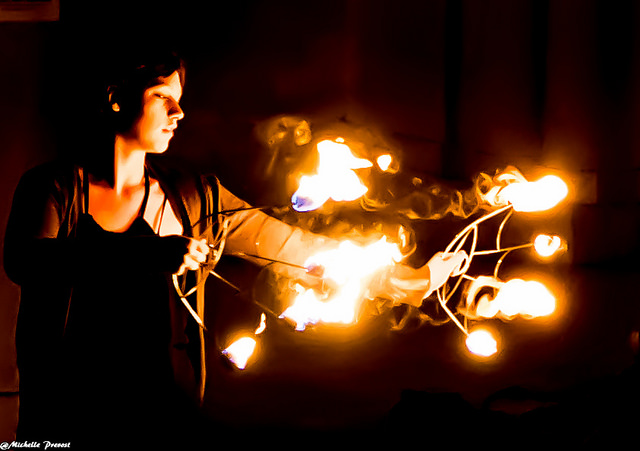Anger. The word used to send revulsion through me.
The feeling of anger creeping up my spine, flushing my skin, tensing my muscles as my heart started to pound.
I despised it, I denied it, I did anything to pretend I never felt anger.
It scared me. My emotions were so overpowering as a child, and I didn’t learn how to effectively release and work through them, so I just learned to shove it down and put a lid on it.
Not anymore.
I have learned that we can make friends with anger. We can embrace it with maitri, compassion and humor.
Like an errant, wayward child, I have learned to smile upon my anger when it comes up and breathe into it with mindfulness and compassion.
We can simply feel what we feel and not identify with it, even those strong, negative, dense emotions like anger, jealousy, guilt or shame. We don’t even have to act on the emotion. That was a news flash to me at the ripe old age of 34. Oh, I don’t have to act a fool and yell at anyone because I am angry? I don’t have to shut down, stomp away and treat you like you’re invisible because I feel rejected and that turns up as anger?
I can just simply do nothing and it will pass?
If you’re anything like I was, this is a mind-blowing concept. I had spent a life being ruled by emotions, acting like a lunatic trying to keep my emotional storms at bay, and the whole time I could have learned to let the storm flow and just observe it?
Who knew.
I’ve finally learned this lesson, and it’s one of the biggest reliefs of my life—no longer fearing, denying, burying and avoiding anger. My severe inability to deal with my strong and negative emotions as a child resulted in my living a painful, dark life fueled with depression and addiction. Thus when I got off the drugs and the booze, I quickly accepted that if I wanted a life of peace, I would have to learn to deal with my powerful emotions that I had been running away from for so long.
I used to spend so much time denying anger, and I was so blocked at the level of my heart chakra, that I couldn’t even get in touch with my feelings. When I finally did, there was a lot of deep-seated, long-festering, long-buried anger inside of me. A lot of mud that had been sitting in there being denied for a long time.
I started cleaning it all out, determined to no longer be a slave and prisoner to my strong emotions. I went within with the fierce determination to clean out all the old stagnant emotions that I had been denying for all those years. And clean it out I did. I wrote, I exercised, I meditated, I cried, laughed, yelled, vented, read, wrote some more—until I had dug my way through the proverbial sh*t pile that had been festering inside me and let it all just go. Finally.
Once I cleaned out all that old, stagnant energy, I knew I needed to find a healthier way to deal with the new stuff coming and going. I took suggestions and continued reading about and practicing meditation, yoga and releases.
I started changing.
Anger continued to give me trouble. I continued to deny it, with the fear that anger would make me unlovable. See, I was still identifying with my emotions, letting them define me as though feeling something one minute would put a label of “angry” on me. And I didn’t want that, because I still judged anger as ugly. (I was still labeling, thus I was afraid of being labeled.)
Around this time, a book found me, as they always do just at the right time. The book was Anger: Wisdom for Cooling the Flames by Thich Nhât Hańh, and it blew my mind wide open.
As I devoured his wisdom on anger, I found myself laughing at myself and how silly I had been in dealing with anger—or not dealing with it, I should say. For the first time in my life I wasn’t berating myself for having anger; I was instead seeing myself with humor and love. It wasn’t the emotion that was detrimental, it was my behavior.
To me it’s a miraculous process that has become a regular practice for me when my anger or other strong emotions rise up, which is why I want to share it with you, dear readers. So that others who suffer as I once did from overwhelming, intense emotions can see that there is hope, even for us “angry” ones.
Here are the practices that helped me to bring my anger to a healthy place:
1. Admit and accept.
The biggest hurdle for me, believe it or not, was actually admitting, “I am angry.” It’s amazing how just saying it out loud relieves so much internal pressure. And guess what? When I admitted it, nothing happened. The world didn’t end. Nobody judged me. Nobody stopped loving me. Thus I was able to see how irrational my fears had been. I finally started getting vulnerable and admitting it, and people loved me more for it. Tough lesson to learn after so long.
2. Breathe.
Always we must breathe into our most difficult and trying emotions. When we breathe into those that we once ran from, space opens up, and it no longer seems to be this heavy, dark cloud that is never going to leave us. With the breath, I can see that my emotion is not me and I am not my emotion. It’s just an energetic response, and it’s going to pass.
3. Self-talk and affirmations.
I used to constantly have to verbally remind myself, “It’s okay, this will pass. Breathe. It’s okay.” “I am not my anger.” I’ve come to a point now where I don’t have to say them all the time, but occasionally my inner voice reminds me, “It’s okay.” I’ve reprogrammed my mind over time to accept and breathe through whatever is happening. The self-talk creates a cognitive dissonance, which will eventually rewire the brain, if done consistently.
4. Meditation.
It is so crucial to find quiet time alone to meditate, especially if, like me, you suffer from those intense emotions. Meditation allows us to take a step back from what’s happening inside of us and start to become an observer—rather than a participant against our own will. Pre-meditation practice, I never knew I had a choice in how I responded to life. It provides such a freedom if you are ruled by emotions.
5. Humility.
I have long since let go of the idea that I have to be perfect to be loved or to love myself. In practicing humility I allow myself to be human and make mistakes, treating myself with compassionate humor as I journey, fall, trip, go backwards and forwards, and learn. The best thing I ever did for my well-being was to stop taking myself so seriously. Our egos make everything a drama and a crisis; when we can let go of that, we can laugh at our silliness with love. I have found that in getting my ego to be right-sized, I am able to set boundaries, allowing me to pause and say, “I am angry, I need a moment to cool down.” I can then walk away so that I don’t respond with angry words. When we are in humility we no longer have the need to be right, or to take revenge. This allows us to take space and cool off before finishing a discussion.
I still fall flat on my face plenty of times, as I am always going to still be learning too. Sometimes I have to turn around and say “I’m sorry” because my anger got the best of me and my old sarcasm and snide comments came out. The difference today is that it’s okay. Each time my anger pops up it has less and less hold on me now that I greet it with mindfulness and love.
As long as we are willing to learn from our actions and amend any behaviors that hurt others, then we can cut ourselves a break at the end of the day.
~
Relephant Read:
Anger Management: 5 Natural, Ayurvedic Tips to Control Your Temper.
~
Author: Lindsay Carricarte
Editor: Toby Israel
Image: Thoth God of Knowledge/Flickr / Shelly Prevost/Flickr
~









Read 1 comment and reply